Sunwayled M40C
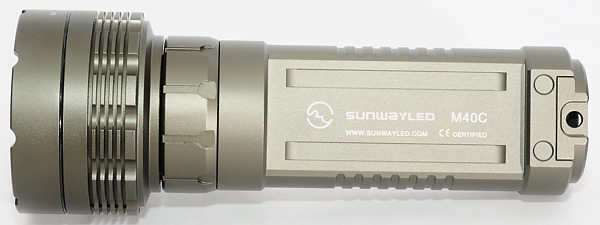
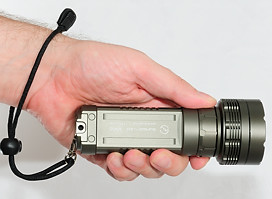
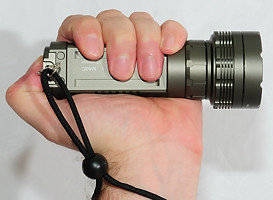
Sunwayled is a new name in flashlight and for their introduction they presented a range of led lights (M20C, M30A, M40A, M40C, M10R, L10A, L10R, most with a ring to select brightness. Here I am going to look at one of the largest of them, a 2x18650 or 4xCR123 light with 3 brightness settings and two colors, a ring is used to select between the settings and a tail switch for on/off. The light is made of aluminum with hard-anodized (Type 3) finish.
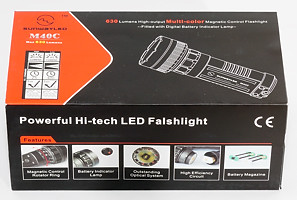
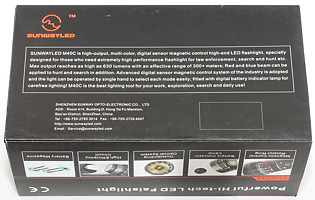
The light is packed in a cardboard box. It is marked with the new FL1 standard that is supposed to make flashlight ratings more comparable.

The content of the box is: The flashlight, a lanyard, 2 spare o-rings, manual, warranty card and a brochure of the Sunwayled lights. The manual supplied with the first production lights are a early version with corrections in (A mode has been removed from the manual).


The light has a OP (Orange peel) reflector with a MC-E led in the center. Around the reflector are 6 blue leds and 6 red leds, making it possible for this light to throw a floody red or blue beam. The beam from the 6 leds are not smooth, but has artifacts from the leds.
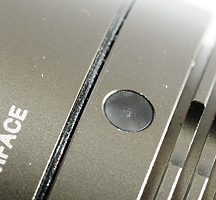
On the head there is a red indicator led, this will turn on when the battery is low. If it starts flashing LiIon batteries are way too low. Because there is only one led, it is necessary to keep the light in a specific orientation to see when it is time to replace the batteries.
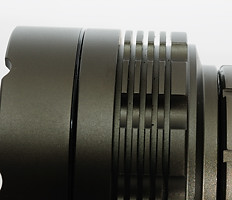
On the head there are some cooling fins, these are needed when the light is at full power with white light.
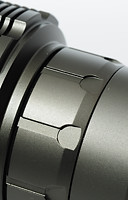
Next is the magnetic ring that is used to select between low-medium-high-blue-red. It has click-stop, but it is possible to select positions in between, they do not show any extra brightness settings.
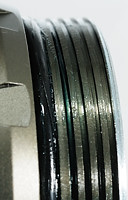
The head has a very good quality of square threads with anodized, making it possible to lock out the light by loosen the battery tube.
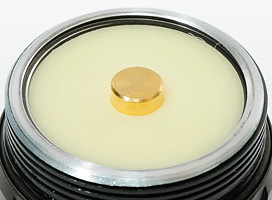
The battery connection in the head is not directly on the circuit board, but on a metal knob with a spring behind.
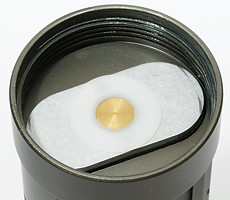
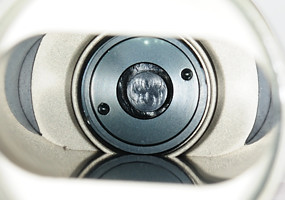
The battery tube has a battery magazine with both connections on the front. The back of the battery tube is the rubber from the tail switch, the actual switch is mounted on the battery magazine.
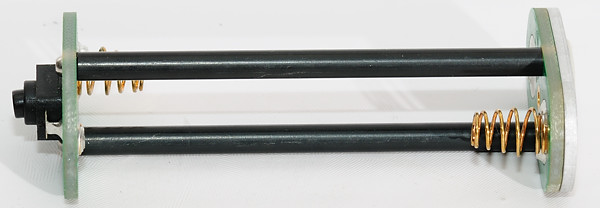
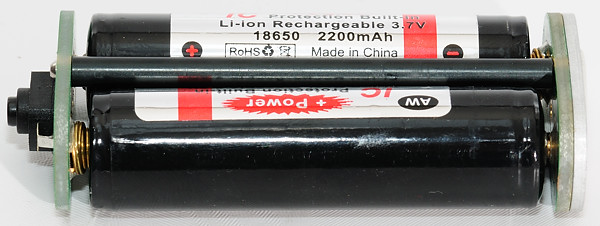

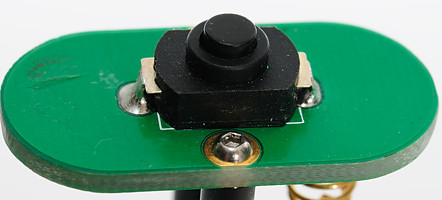
The battery magazine is a simple construction that can take two 18650 or four CR123 batteries. The magazine is a bit short and will not take all lengths of 18650 batteries. I have checked with AW 2200 and AW 2600 (flat top) they both fit. The switch is a reverse switch.
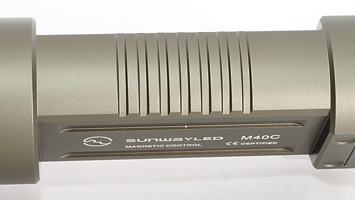
The battery tube does not have knurling but instead some groves.
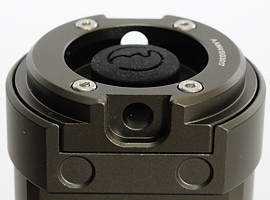
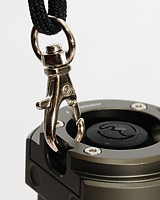
The tail has a recessed switch making tail standing possible, except when the lanyard is mounted.
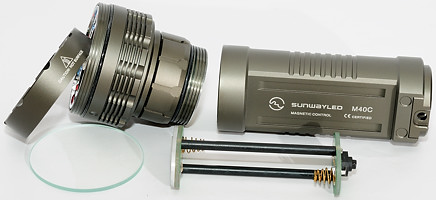
This is the parts I could disassemble the light into without using tools.
The light has a good mechanical quality with a good user interface (The ring), it has a good runtime. For people that want access to red or blue light the colored leds is a very nice feature. I would have liked one more position on the ring with a brightness between low and medium.
Technical specification and measurements
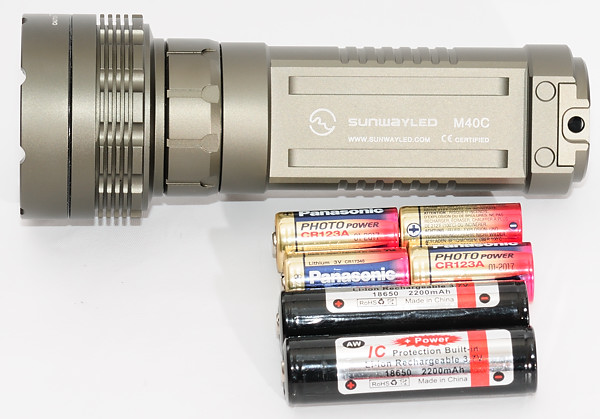
This light is designed for both LiIon and CR123 batteries.
Measured size and weight:
Length: 157 mm
Diameter: 23 to 57 mm
Weight: 354 gram with 2x18650
The light uses a Cree MC-E led, 6 small red leds and 6 small blue leds.

In the above table I have used 2600mAh 18650 batteries for measuring and estimating the runtime. The estimated lumen are based on the specified 630 lumen and then scaled according to measured brightness, note that the low is considerable lower than specified.
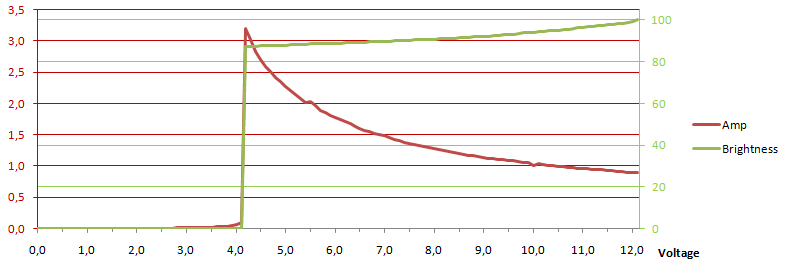
A voltage scan shows that the light has very good regulation down to around 4 volt. The drop is brightness is due to heat (This test was done without any airflow).
The red battery warning led turns on at 7.1 volt and start blinking at 5.7 volt.
Red and blue is supplied from a simple constant current generator, i.e. the current consumption does not change with coltage. Blue is stable down to 5 volt and red down to 4.6 volt.
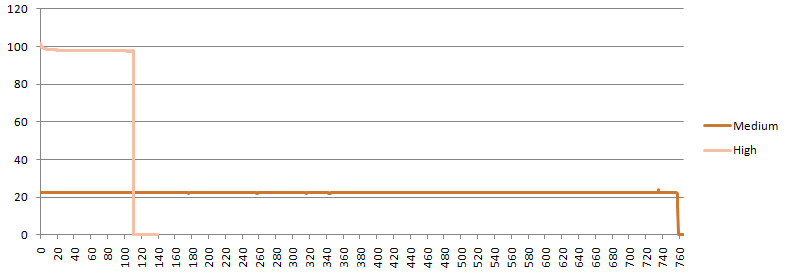
The runtime plot also shows the good stabilization. On high it has a small drop in brightness before thermic equilibrium is reached (Test was done with airflow).

The regulation of the brightness is not completely smooth, but it has some regulation at a high frequency making it invisible. The actual frequency depends on the voltage, but is around 77 kHz.

Reducing the brightnes also reduces the regulation frequency to about 30 kHz, i.e. still invisible.

On low the regulation is only pulsing the light, i.e. using pwm, but the frequency is still around 25 to 30 kHz.
Comparison to other Flashlights
Sunwayled M30A, Sunwayled M40A, Sunwayled M40C
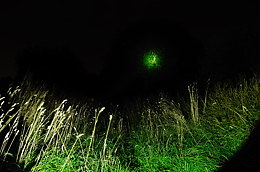
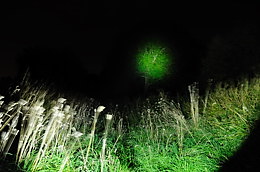
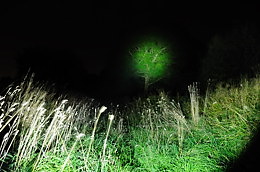
Fenix TK40, Fenix TK45, ThruNite Catapult V2
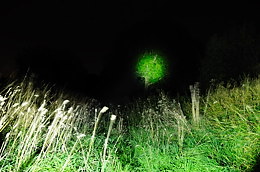
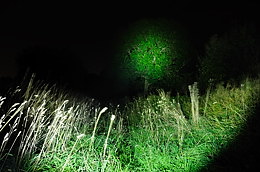
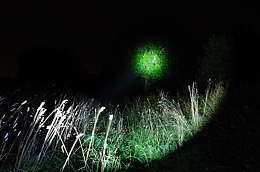
For the full comparison to other lights with graphs and beamshots see here.
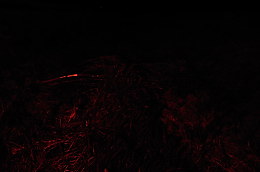
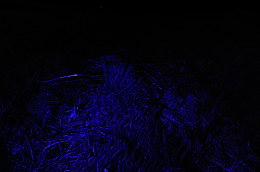
For the full comparison to other colored lights with graphs and beamshots see here.
Notes
Sunwayled has changed name to Sunwayman





































